Heel Spur Pain: Symptoms, Causes, Treatment & Exercises
:format(webp)/cdn.mskdoctors.com/storage/2025/4/4hvGeO3cW25qq9wVFpLpMqtxn8sHZgPY.jpg)
Key Takeaways
-
Heel spur pain is often linked to plantar fasciitis, a common foot condition.
-
Symptoms include sharp pain in the heel, especially with the first steps in the morning.
-
Non-surgical treatments like stretching exercises and orthotics are effective in relieving pain.
-
Wearing supportive shoes can prevent further heel spur development.
-
MSK Doctors provides specialized care for heel spur pain with expert consultants who create personalized treatment plans, including custom orthotics, targeted exercises, and advanced interventions when necessary.
Recognizing Heel Spur Pain
Heel spur pain is a common issue that many people experience, but it often goes unnoticed until the pain becomes unbearable. Understanding the nature of heel spur pain can help you distinguish it from other foot-related conditions.
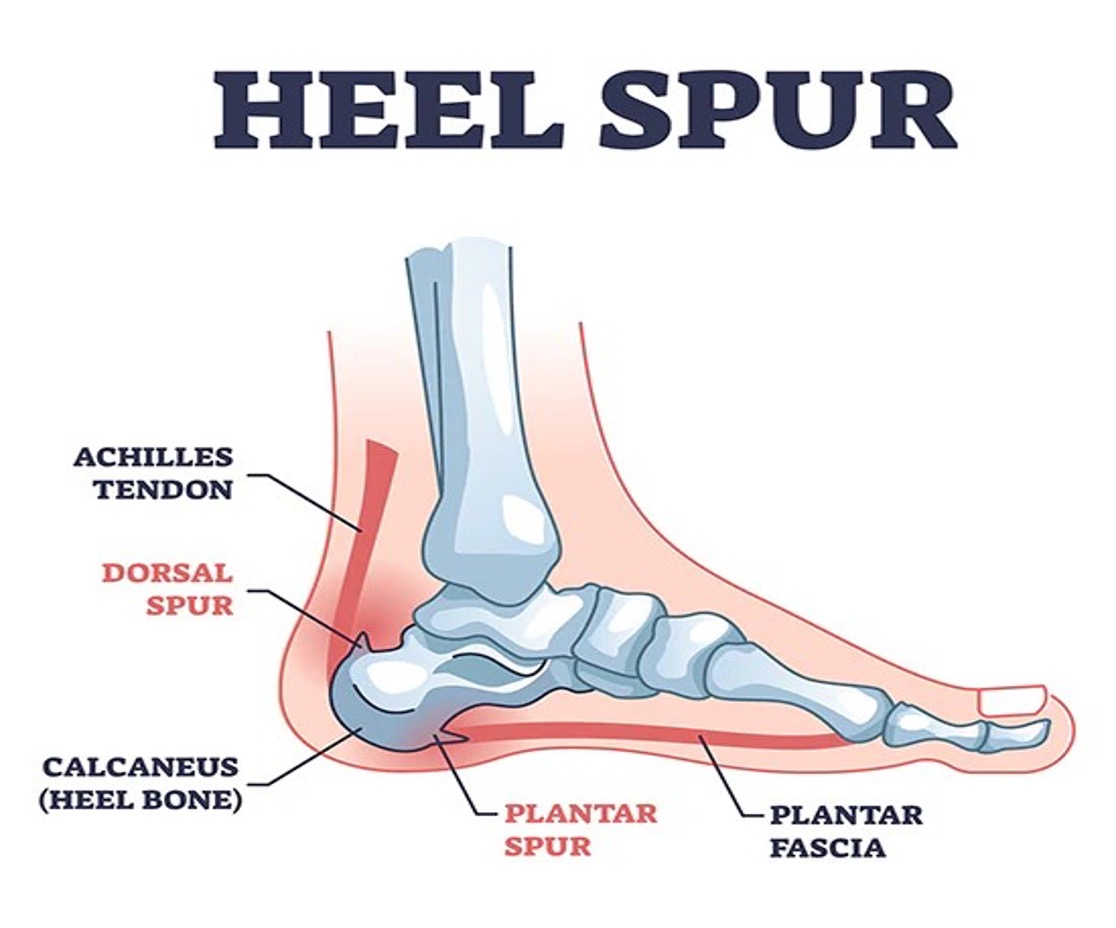
Heel spurs are bony outgrowths that develop on the heel bone, which can cause significant discomfort. This pain typically arises when stress and strain damage the plantar fascia, the ligament on the bottom of the foot.
Primary Pain Indicators
The primary indicator of heel spur pain is the sharp, stabbing sensation that many people feel in their heel. This pain is usually most intense when you take your first steps in the morning. As you walk, the pain may subside, only to return after long periods of standing or physical activity.
Acute vs. Chronic Pain
Acute pain is typically sudden and severe, often described as a sharp or stabbing sensation. In contrast, chronic pain is more persistent, lasting for weeks or even months. With heel spurs, the pain often starts as acute and can become chronic if not addressed promptly.
For example, someone might experience acute pain after a long day of walking or standing. Over time, if the condition isn't treated, this pain can develop into a chronic issue, causing discomfort even during rest.
First-Step Pain Explanation
First-step pain is a classic symptom of heel spurs, which occurs because the plantar fascia tightens overnight as you sleep. When you take your first steps in the morning, the sudden stretching of the fascia causes sharp pain. This sensation is often a telltale sign of both heel spurs and plantar fasciitis.
Differences from Other Foot Conditions
Heel spur pain can easily be confused with other foot conditions, such as plantar fasciitis or Achilles tendinitis. However, there are distinct differences: while plantar fasciitis also causes heel pain, it is due to inflammation of the plantar fascia rather than a bony growth. Achilles tendinitis, on the other hand, causes pain at the back of the heel rather than the bottom.
To differentiate, consider the location and timing of the pain. Heel spur pain is typically located at the bottom of the heel and is most severe with the first steps in the morning. In contrast, Achilles tendinitis pain occurs at the back of the heel and may worsen with activity.
|
Root Causes of Heel Spurs
Plantar Fasciitis Connection
Plantar fasciitis is closely linked to heel spurs, as both conditions involve the plantar fascia. When the plantar fascia becomes inflamed or strained, it can lead to the development of heel spurs. Addressing plantar fasciitis can also help manage heel spur pain.
Calcium Deposits
Heel spurs form when calcium deposits accumulate on the heel bone. This process typically occurs over several months and is often a response to ongoing stress or inflammation in the foot. These deposits create a bony protrusion that can cause pain and discomfort.
Note that not all heel spurs cause pain; in fact, many people with heel spurs may be unaware of their presence until they experience symptoms of plantar fasciitis or other foot conditions.
Risk Factors and Triggers
Several risk factors like obesity, prolonged standing or walking, and having flat feet or high arches can increase your likelihood of developing heel spurs. Additionally, wearing poorly fitted or unsupportive shoes can exacerbate the issue.
Impact of Footwear
Shoes that lack proper arch support or cushioning can increase stress on the heel, leading to pain and discomfort. Therefore, selecting shoes that offer good support and fit well helps in preventing and reducing heel spur pain.
Effective Heel Spur Treatments
Over-the-Counter Medication
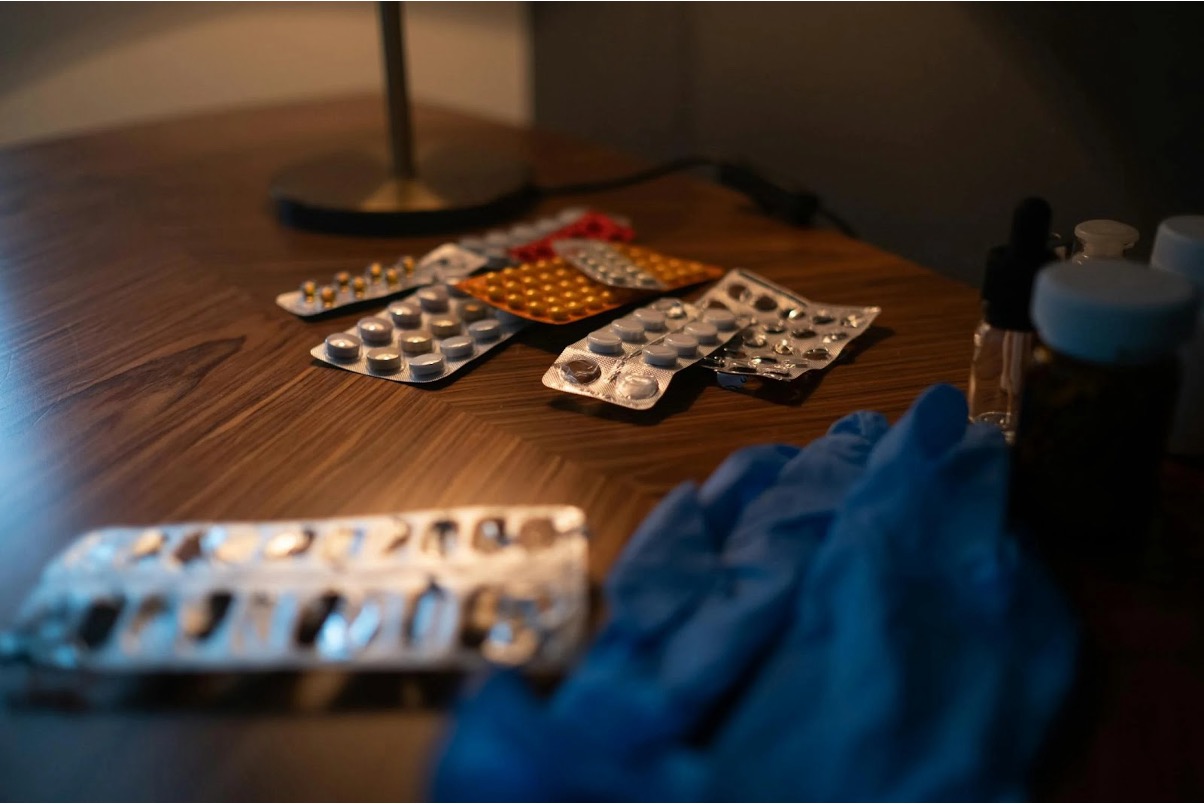
OTC pain relievers like ibuprofen or naproxen can provide quick relief from heel spur pain by reducing inflammation and easing discomfort.
Over-the-counter (OTC) medications can be a quick and convenient way to alleviate heel spur pain. Nonsteroidal anti-inflammatory drugs (NSAIDs) such as ibuprofen or naproxen are commonly used to reduce inflammation and relieve pain. These medications can be taken as needed, but follow the recommended dosage to avoid potential side effects.
Besides that, topical pain relievers, such as creams or gels containing menthol or capsaicin, can be applied directly to the affected area: they numb the pain receptors and provide temporary relief.
Corticosteroid Injections
For those experiencing severe pain that doesn't respond to OTC medications, corticosteroid injections may be an option. These injections deliver powerful anti-inflammatory medication directly to the site of pain, providing rapid relief. However, they should be used sparingly, as repeated injections can weaken the surrounding tissues.
Custom Orthotics and Supports
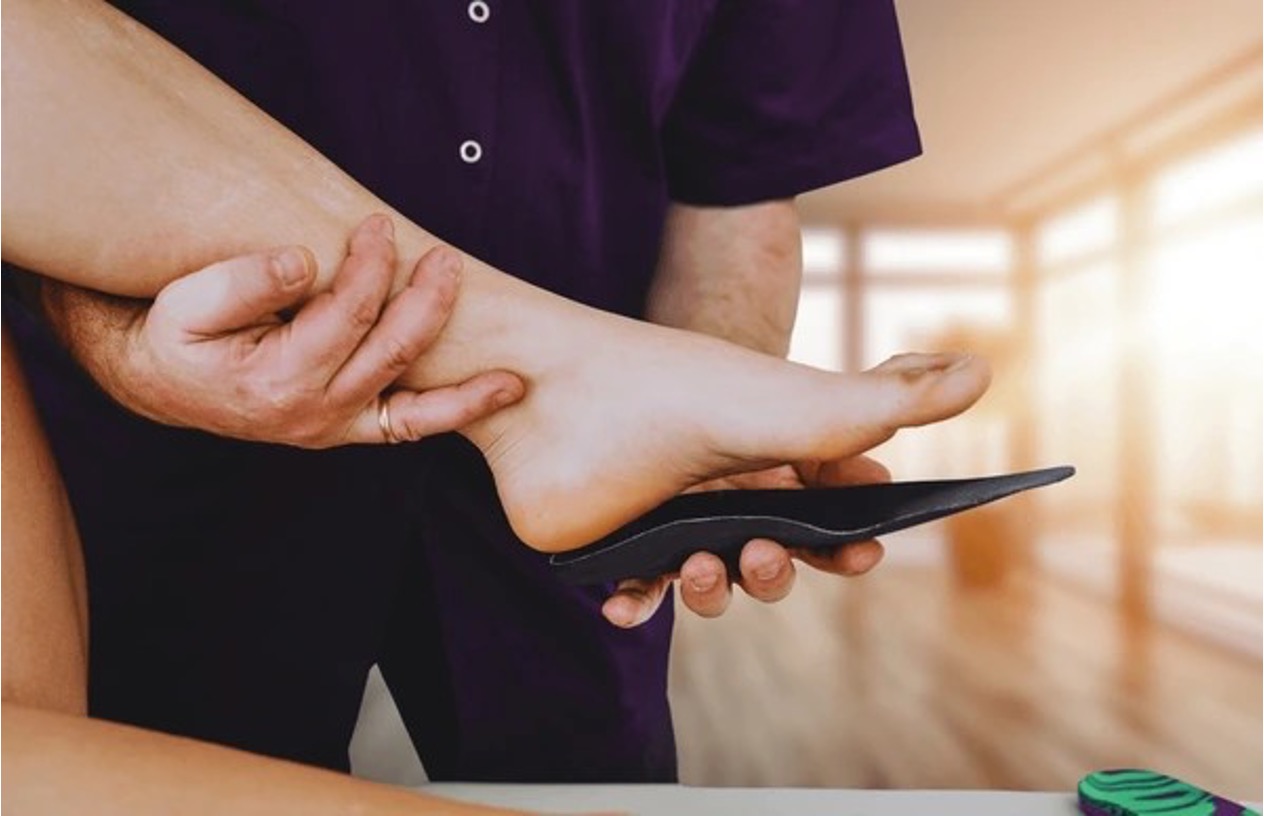
Custom orthotics and supportive footwear ensure proper arch support and cushioning, distributing weight more evenly across the foot and reducing stress on the heel.
Orthotics can be custom-made to fit your foot's unique shape, ensuring optimal support and comfort. In addition to orthotics, wearing shoes with adequate arch support and shock absorption can prevent further strain on the plantar fascia.
Targeted Exercises for Relief
Stretching Exercises
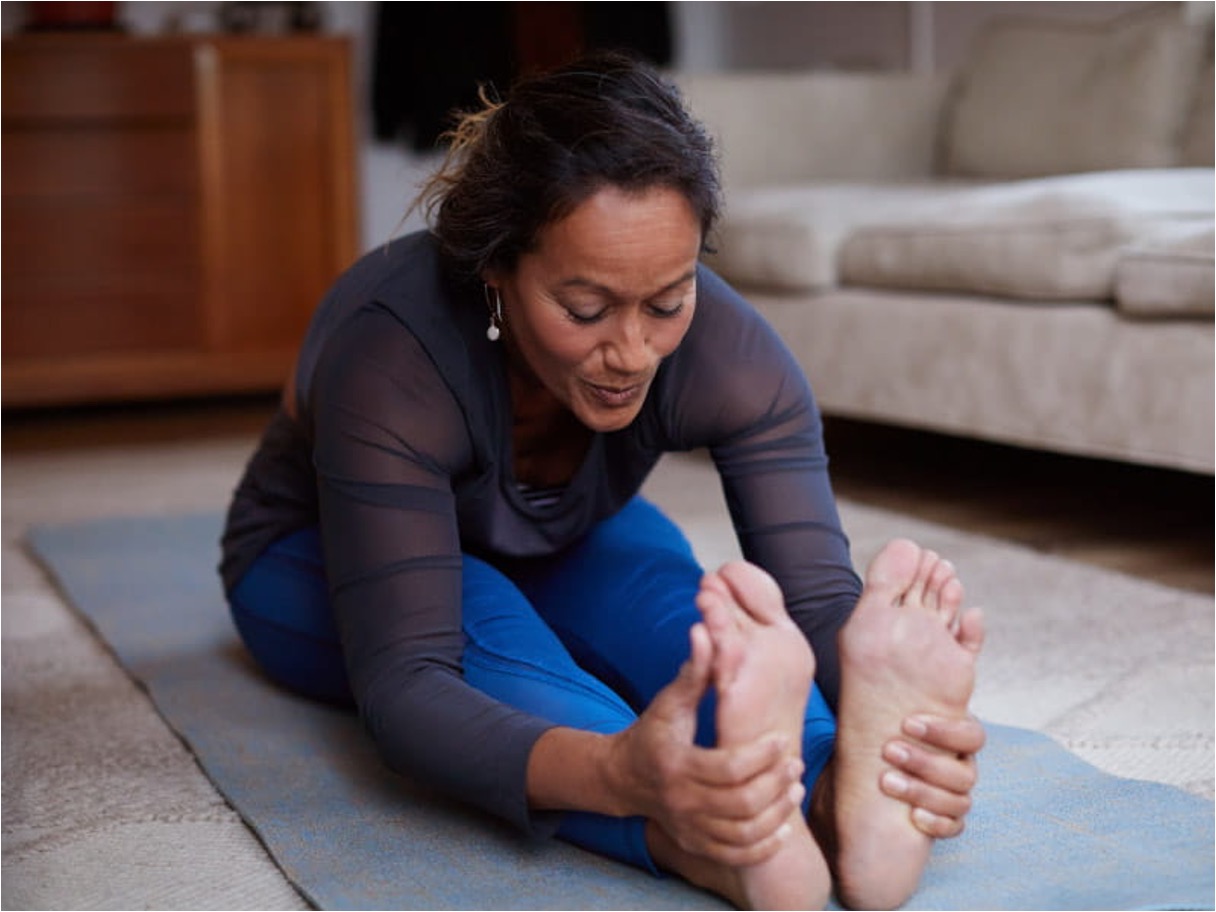
Stretching exercises are essential for relieving heel spur pain. They help lengthen the plantar fascia and Achilles tendon, reducing tension and promoting healing.
Here are some stretches to try out:
-
Calf Stretch: Stand facing a wall with one foot forward and the other foot back. Keeping your back leg straight and your heel on the ground, lean forward into the wall until you feel a stretch in your calf. Hold for 30 seconds and switch legs.
-
Plantar Fascia Stretch: Sit down and place your affected foot over the opposite knee. Use your hand to gently pull back on your toes until you feel a stretch along the bottom of your foot. Hold for 30 seconds and repeat several times.
Strengthening Activities
In addition to stretching, strengthening activities can improve the overall stability and function of your feet. Stronger muscles can better support the arch and reduce the risk of further injury. Consider incorporating exercises such as:
-
Toe Towel Scrunch: Place a towel on the floor and use your toes to scrunch it towards you. Repeat for 1-2 minutes on each foot.
-
Marble Pick-Up: Scatter a few marbles on the floor and use your toes to pick them up and place them in a cup. This exercise helps improve dexterity and strength in your toes.
Frequency and Duration
To achieve the best results, perform these exercises regularly. Aim to stretch and strengthen your feet at least 3-4 times a week, dedicating 10-15 minutes per session. Over time, you'll likely notice a reduction in pain and an improvement in foot function.
Precautionary Measures
While exercises are beneficial, take precautionary measures to avoid overexertion. Listen to your body and stop if you experience increased pain or discomfort. Gradually increase the intensity and duration of exercises as your strength and flexibility improve.
Additionally, consult with a healthcare professional before starting any new exercise regimen, especially if you have existing foot conditions or injuries.
MSK Doctors: Effective Heel Spur Treatment
At MSK Doctors, we understand that heel spur pain can significantly impact your daily life. That's why our team of specialized consultants begins with thorough assessments using our state-of-the-art musculoskeletal MAI-Motion AI platform, to identify the root causes of your pain, whether it's related to plantar fasciitis, footwear issues, or biomechanical factors.
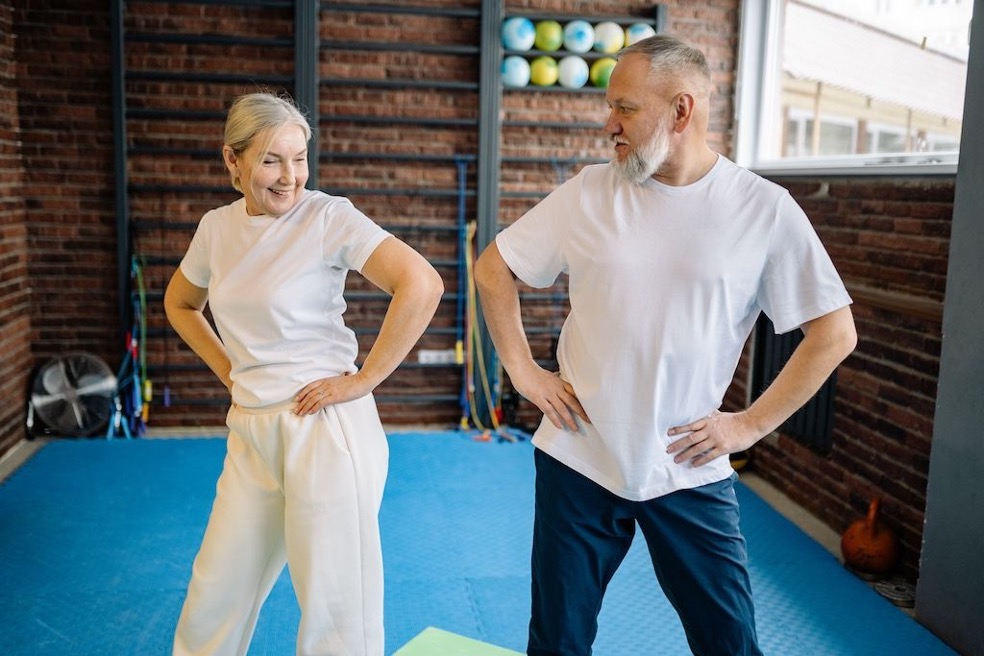
Our multi-faceted approach includes custom orthotics designed for your unique foot structure, targeted stretching and strengthening exercises, medication, and advanced therapies when needed.
We emphasize education about lifestyle modifications that can prevent future problems, from proper footwear selection to activity adjustments.
Don't let heel spur pain limit your activities any longer – contact MSK Doctors for evidence-based treatment that addresses not just your symptoms, but the underlying causes of your condition.
Frequently Asked Questions (FAQ)
What is a heel spur?
A heel spur is a bony outgrowth that forms on the underside of the heel bone. It typically develops due to calcium deposits that accumulate over time, often as a result of stress and strain on the foot. While heel spurs themselves may not cause pain, they are often associated with conditions like plantar fasciitis.
Can heel spurs go away on their own?
Heel spurs do not typically go away on their own, but the pain and symptoms associated with them can improve with proper treatment. Non-surgical interventions such as stretching, strengthening exercises, and supportive footwear can significantly alleviate pain and prevent further complications.
What is the connection between plantar fasciitis and heel spurs?
Plantar fasciitis and heel spurs are closely linked because they both involve the plantar fascia. When the plantar fascia becomes inflamed or strained, it can lead to the formation of heel spurs. Therefore, treating plantar fasciitis often helps alleviate heel spur pain.
What treatment approaches do MSK Doctors use for heel spur pain?
MSK Doctors utilizes a multi-faceted approach to heel spur treatment, combining evidence-based therapies with personalized care plans.
Our specialists assess each patient's specific condition and may recommend custom orthotics, targeted physical therapy, corticosteroid injections when appropriate, and comprehensive education on self-management strategies.
:format(webp)/cdn.mskdoctors.com/storage/2025/5/6NAtUY0TInuAFOF6ylhh7Y3k2O0gCAiL.jpg)
:format(webp)/cdn.mskdoctors.com/storage/2025/5/aIMSrJCWBNrLQKZXwdbd61WHOgFu6Jbo.jpg)
:format(webp)/cdn.mskdoctors.com/storage/2025/5/w9ctvGdSNB4DNootif5Dkk2S72k9Q4Ea.jpg)
